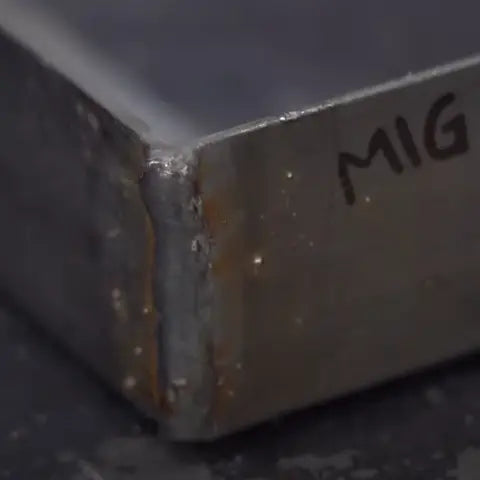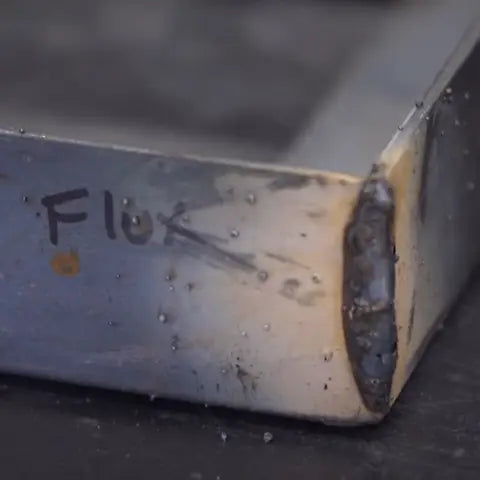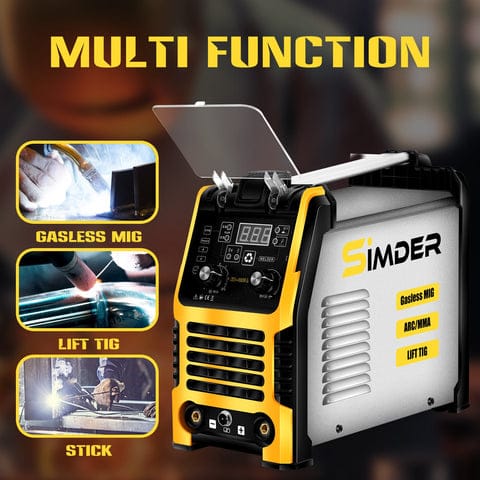Gas vs. Gasless MIG: Which One Suits You?
Oct 11, 2023
Introduction
The choice between gas and gasless MIG welding is not merely a technical decision; it's a pivotal point in a welder's journey. As we delve into the intricacies of MIG welding, the gas vs. gasless dilemma emerges as a crucial crossroad. Let's navigate this welding landscape and unravel the significance of your MIG welding choice.
Chapter 1: Understanding MIG Welding
What is MIG Welding?
MIG welding, or Metal Inert Gas welding, is a versatile arc welding process that employs a continuous wire electrode. This method, renowned for its speed and efficiency, finds applications across diverse industries. In essence, MIG welding involves melting the workpiece and the wire electrode to form a weld pool. The weld pool is shielded from atmospheric contamination by an inert gas. MIG welding's adaptability allows it to weld various materials, from aluminum to stainless steel. Its broad applicability makes it a preferred choice in industries demanding versatility.
The Role of Shielding Gas
Central to MIG welding is the shielding gas, crucial for protecting the weld pool from atmospheric elements. The choice of gas profoundly influences welding outcomes.
The crux of the matter: gas or gasless? This introduces the central theme of our exploration, a choice that impacts the welding process fundamentally.
Understanding MIG welding necessitates familiarity with its key components: the welding gun, power supply, wire electrode, and shielding gas apparatus. Each plays a vital role in the welding orchestration.
Chapter 2: Gas Shielded MIG Welding
How Gas Shielding Works
Gas shielded MIG welding relies on an external shielding gas, usually a mixture of argon and carbon dioxide. This gas shields the molten weld pool from the ambient air, preventing oxidation. By creating a protective envelope around the weld, gas shielding ensures a clean and precise welding process. This protection is paramount for high-quality welds.
While gas shielding offers numerous advantages, it also comes with its limitations and considerations. Balancing these factors is crucial for optimal welding outcomes.
Advantages of Gas Shielded MIG
Gas shielding excels in delivering clean, visually appealing welds. It's a go-to choice for projects where weld aesthetics and quality are paramount.
Limitations and Considerations
However, it's essential to acknowledge the limitations, such as the need for an external gas supply and potential wind interference in outdoor welding environments.
Chapter 3: Gasless (Flux-Cored) MIG Welding
Flux-Cored Wires Unveiled
Gasless MIG welding employs a different approach, using a flux-cored wire that contains compounds to shield the weld pool. This flux cored wire eliminates the need for an external shielding gas.
Self-Shielding Mechanism
Gasless MIG welding relies on a self-shielding mechanism, where the flux within the wire melts and forms a protective barrier, preventing contaminants from infiltrating the weld.
Gasless MIG welding shines in high-heat environments where the shielding gas in gas shielded MIG may dissipate too quickly. It's also suitable for outdoor projects where wind can disrupt gas shielding.
Advantages of Gasless MIG
Gasless MIG welding offers ease of use, making it an attractive option for novice welders. It is also highly portable and well-suited for remote job sites.
Limitations and Considerations
The smoke and fumes that come off a gasless MIG weld are toxic, with short term effects like dizziness and nausea and long-term effects that are more serious.
Chapter 4: Comparing Gas vs. Gasless MIG


The primary distinctions between MIG welding employing gas and a gasless configuration lie in the characteristics of the welding process. The utilization of gas affords a higher level of stability and results in superior weld quality, characterized by reduced emissions and spatter. When aiming for a clean, refined weld on delicate materials, the preference leans toward gas-based MIG welding.
Conversely, a gasless setup typically generates greater levels of weld spatter, although modern gasless wires can, to some extent, achieve weld bead quality comparable to that of gas-based MIG welding.
Nonetheless, in scenarios where the welding task occurs in challenging-to-access outdoor environments, a gasless setup proves to be more economically efficient, lightweight, and portable. When visual aesthetics are not a critical factor, gasless MIG welding becomes a more convenient choice.
Conclusion
When opting for gas in MIG welding, it is crucial to select the appropriate gas based on the specific metal you are working with.
In the realm of MIG welding, the two most commonly used gases, contingent on the metal in question, are pure argon (Ar) and an argon and carbon dioxide (Ar/CO2) gas mixture. The key distinction between the two lies in their inertness; argon is classified as an inert gas, whereas carbon dioxide falls into the semi-inert category.
For welding mild steel, it is advisable to employ argon and carbon dioxide (Ar/CO2) gas, as this choice yields a deeper penetration weld while minimizing spatter.
Conversely, when dealing with aluminum MIG welding, the preferable option is pure argon (Ar) gas. This selection results in a shallower yet thicker weld, marked by reduced spatter.
Need a Gasless MIG function welder? Check our SD-4050 Mini :



